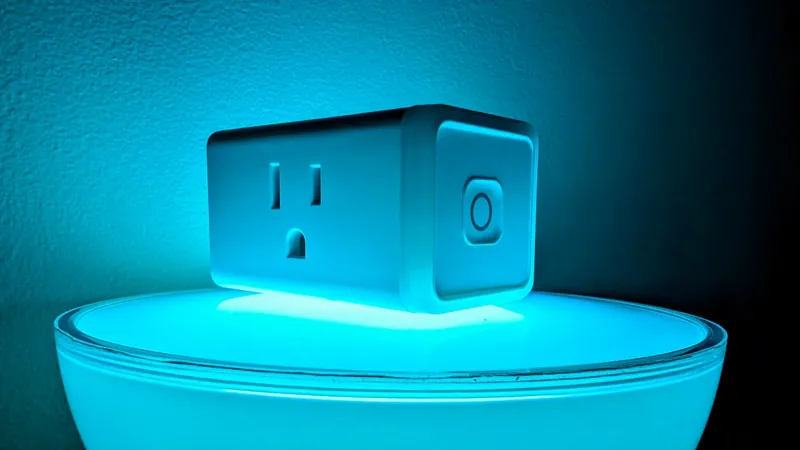
SpaceXray Project Makes History with First X-ray Image from Space!
2025-04-08
Author: Sophie
Introduction
In an exciting breakthrough for space medicine, the SpaceXray project has proudly released the first-ever X-ray image captured in the depths of space, aboard SpaceX’s groundbreaking Fram2 mission. This stunning achievement marks a significant leap forward in both human health research and the potential for medical procedures in space.
The Fram2 Mission
The Fram2 mission, which recently completed its orbit around Earth at an astonishing speed of 17,500 miles per hour, carried a four-person crew in a Dragon capsule situated 200 miles above the planet’s surface. This mission was part of an ambitious research initiative featuring 22 studies focused on long-term human health and the challenges of space travel.
Leading Partners
Leading the charge in this innovative project were Waterloo, Ontario-based KA Imaging and Northbrook, Illinois-based MinXray. These companies provided cutting-edge X-ray technology initially developed for battlefield applications, pushing the boundaries of what is possible in extreme conditions. Collaborators on this venture also included prestigious institutions like MIT, Mayo Clinic, and St. Louis University.
Technology and Innovation
Lonnie Petersen, an associate professor of aeronautics and astronautics at MIT and a co-investigator for the SpaceXray project, emphasized the rigorous certification process for spaceflight hardware, highlighting the importance of miniaturization and weight reduction in such devices. "To ensure safety in the confined environment of a spacecraft, increased safety standards are essential," Petersen noted. "Space truly acts as a remarkable accelerator for advancing technology, and this particularly applies to medical innovations."
Capabilities of the Compact X-ray Receiver
According to KA Imaging’s CEO, Amol Karnick, the compact X-ray receiver developed by his team is roughly the size of a large laptop and boasts the capability to distinguish between bones and soft tissue. This function could prove invaluable for assessing both astronauts and equipment during missions. Until the recent successful hand image was taken, there were uncertainties about the feasibility of conducting X-rays in the high-radiation environment of space, but initial results appear promising. "The images we’ve seen so far show no signs of radiation interference," Karnick remarked.
Challenges of Zero-Gravity Environments
Petersen also acknowledged the extraordinary challenges that accompany zero-gravity environments, such as managing background radiation levels, aligning the equipment and patient correctly, and creating straightforward operational protocols for non-specialists to execute X-ray procedures. He expressed satisfaction at how quickly the crew adapted, stating, "The astronauts learned how to take X-rays in a single afternoon using a train-the-trainer model. They followed a pre-established protocol, took images of one another, evaluated their quality, and stored them effectively."
Future Implications
As space exploration continues to expand and evolve, projects like SpaceXray signify the remarkable potential for medical science in space—profoundly reshaping our understanding of health management during long missions to Mars and beyond. The implications could pave the way for a future where medical emergencies can be handled far beyond the confines of Earth, potentially saving lives in otherwise dire circumstances. What other groundbreaking discoveries lie ahead in this uncharted territory? Stay tuned as we follow the next steps in this thrilling journey to the stars!









 Brasil (PT)
Brasil (PT)
 Canada (EN)
Canada (EN)
 Chile (ES)
Chile (ES)
 Česko (CS)
Česko (CS)
 대한민국 (KO)
대한민국 (KO)
 España (ES)
España (ES)
 France (FR)
France (FR)
 Hong Kong (EN)
Hong Kong (EN)
 Italia (IT)
Italia (IT)
 日本 (JA)
日本 (JA)
 Magyarország (HU)
Magyarország (HU)
 Norge (NO)
Norge (NO)
 Polska (PL)
Polska (PL)
 Schweiz (DE)
Schweiz (DE)
 Singapore (EN)
Singapore (EN)
 Sverige (SV)
Sverige (SV)
 Suomi (FI)
Suomi (FI)
 Türkiye (TR)
Türkiye (TR)
 الإمارات العربية المتحدة (AR)
الإمارات العربية المتحدة (AR)